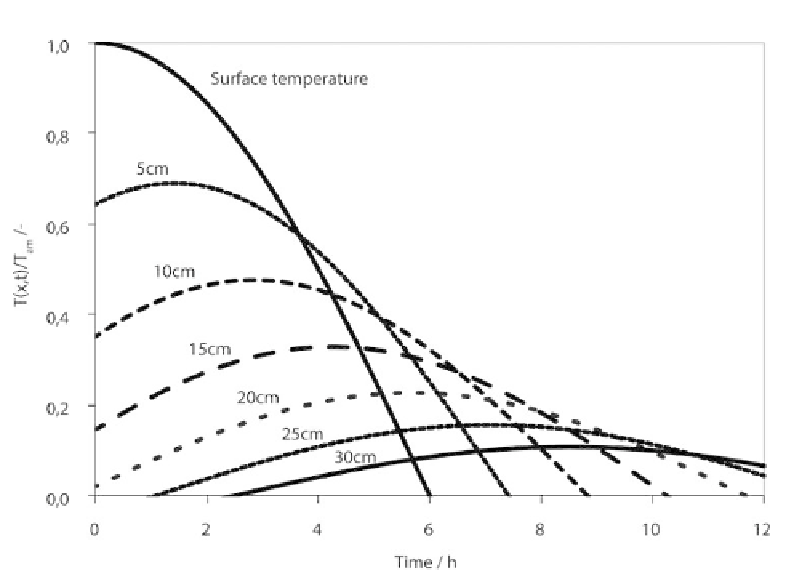Environmental Engineering Reference
In-Depth Information
Figure 18.9.11
Variation in temperature T(x, t) normalised to the amplitude T
sm
around the average
value as a function of time and component depth x in 5 cm steps for a concrete building
component.
The use of a simple energy balance model is recommended if the irradiance on
a component surface is also to be considered in addition to fluctuations of air tem-
perature. The energy balance model provides for the conversion of short-wave solar
irradiance into a so-called sol-air temperature, which allows for the usage of the
aforementioned analytic solutions to the thermal conduction equations.
The heat flow supplied to a component surface consists of the absorbed irradiance
αG
plus the heat flow transferred by the air (temperature
T
o
) to the surface (
T
s
) with
the heat transfer coefficient
h
. This supplied heat flow is combined in a simple model,
ignoring temperature-dependent modifications of the heat transfer coefficient
h
, into
a purely temperature-dependent heat flow described by the sol-air temperature
T
So
.
αG
+
h (T
o
−
T
s
)
=
h
(
T
So
−
T
s
)
(18.9.2)
αG
h
T
So
=
T
o
+
A periodic change in temperature at a component surface occurs for example in
transparently insulated components with absorption of solar radiation on the wall
surface.
The periodic change in temperature (as seen in Figure 18.9.11) within the compo-
nent can be calculated with exponentially dampened amplitude and period duration
t
0
.

Search WWH ::

Custom Search